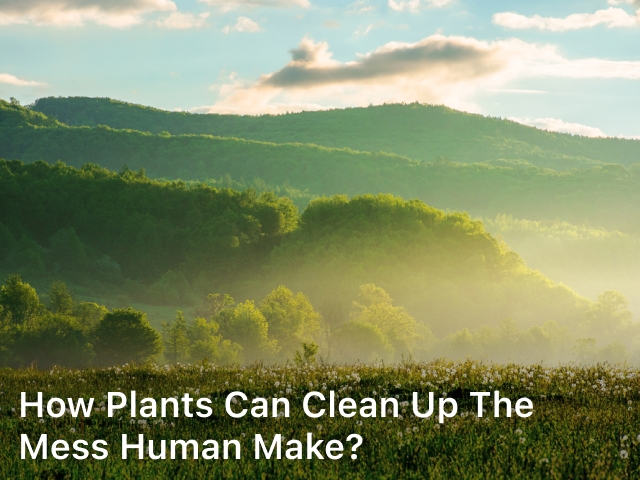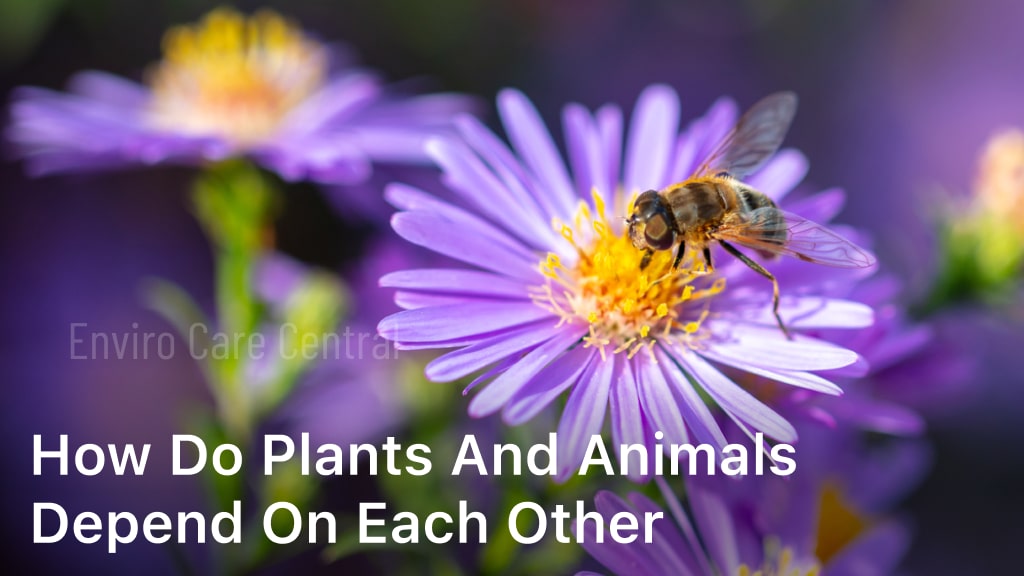How Plants Can Clean up the Mess Human Make?

How Plants Can Clean up the Mess Human Make? Discover how plants can clean up the mess humans make, playing a vital role in environmental restoration. Learn more about nature’s own cleanup crew.
Environmental destruction caused by human activity has become a major concern for the planet. Industries, agriculture, transportation, and human settlement have left a detrimental effect on the environment.
However, nature has its own way to counterbalance the negative impacts of human activities. Plants are the natural cleaning agents that play a crucial role in restoring the ecological balance of the planet.
Through various processes, plants can remove pollutants from the air, soil, and water, making them the unsung heroes of environmental restoration.
How Plants Can Clean up the Mess Humans Make
Key Takeaways:
- Plants have a crucial role in cleaning up environmental damage
- Plants can remove pollutants from air, soil, and water
- Nature has its own way to counterbalance negative impacts of human activities
- Environmental restoration is essential for the planet’s longevity
- Sustainable practices can help protect and restore plant ecosystems for future generations
The Power of Phytoremediation
Phytoremediation is the process by which certain plants can clean up pollutants in soil, water, and air. It is a natural and sustainable method of detoxifying contaminated areas, removing harmful substances, and restoring ecological balance.
Plants used in phytoremediation are often able to absorb and break down pollutants in their tissues through a process called phytotransformation. Some plants can even metabolize and transform these pollutants into harmless substances.
Phytoremediation is particularly effective in removing heavy metals, such as lead, from soil, as well as organic pollutants, such as petroleum hydrocarbons. The process can also be used to treat polluted water, either through direct absorption by aquatic plants or through the remediation of wetlands that act as natural filters.
The use of phytoremediation has several advantages over traditional methods of environmental cleanup. It is a cost-effective and environmentally friendly solution that does not involve the use of harsh chemicals or heavy machinery. Additionally, it can be used in areas where other methods may not be feasible, such as in heavily populated areas or areas with limited access.
Overall, phytoremediation is an important tool in the fight against environmental pollution and degradation. As more research is conducted and more plants are identified as effective phytoremediators, this method has the potential to become a key component of sustainable environmental restoration efforts.

Wetland Plants and Water Purification
Wetlands are critical ecosystems that perform a range of ecosystem services, including water purification. Wetland plants, such as reeds and cattails, play a key role in filtering and removing pollutants from water bodies.
Through a process called phytoremediation, wetland plants absorb pollutants such as nitrogen and phosphorus from agricultural runoff, septic systems, and industrial discharges, improving water quality and reducing the risk of harmful algal blooms and fish kills.
| Benefits of wetland plants for water purification: |
|---|
| Filtering pollutants such as nitrogen and phosphorus from water |
| Reducing the risk of harmful algal blooms and fish kills |
| Improving water quality for human consumption and aquatic life |
Wetlands not only serve as natural water filters but also provide critical habitats for a wide range of plant and animal species. The restoration and preservation of wetlands are essential for maintaining ecosystem resilience and biodiversity.
By protecting and restoring wetlands, we can support the important role that wetland plants play in water purification and the overall health of our ecosystems. As such, we must recognize the importance of these systems and ensure that they receive the necessary protection and restoration efforts to continue providing ecosystem services for years to come.
Forests as Carbon Sinks
Forests are one of the best natural solutions to climate change. Trees absorb carbon dioxide (CO2) from the atmosphere through photosynthesis and store it in their biomass and soil. This process, called carbon sequestration, helps reduce the concentration of CO2 in the atmosphere, which reduces the greenhouse effect and global warming.
According to the United Nations, forests can absorb up to 30% of the CO2 released by human activities. However, deforestation and forest degradation are major contributors to climate change, releasing carbon into the atmosphere and reducing the capacity of forests to act as carbon sinks. Therefore, protecting and restoring forests is essential for mitigating climate change.
Forests also provide other important ecosystem services, such as regulating water cycles, supporting biodiversity, and providing habitat for numerous plant and animal species. Furthermore, forests are important sources of livelihood for local communities, providing food, fuelwood, and other forest products.
In order to preserve forests as carbon sinks and ensure their contribution to the fight against climate change, sustainable forest management practices must be implemented. This includes promoting afforestation and reforestation, protecting natural forests from degradation and deforestation, and reducing illegal logging and forest conversion for agriculture or other land uses.
Keep Reading : Is Fire a Natural Disaster or Not?
Urban Greenery and Air Quality Improvement
Urban environments are notorious for their poor air quality, which is a major concern for public health. However, cities can also be home to green spaces such as parks, gardens, and green roofs that have been proven to contribute to better air quality.
Plants play a crucial role in improving air quality by removing pollutants from the air through the process of photosynthesis. They absorb carbon dioxide and other harmful gases and release oxygen, which helps to purify the air. In addition, plants also absorb particulate matter, which is a type of air pollution that can cause respiratory problems and other health issues.
Urban greenery can help to combat air pollution in several ways. For example, trees planted along roads can reduce the levels of harmful gases by absorbing them through their leaves and branches. Studies have also shown that parks and green spaces can create a microclimate that reduces the concentration of pollutants in the surrounding area. Additionally, green roofs can help to cool the air and reduce the amount of energy needed for air conditioning, further reducing air pollution.
Research has shown that increased exposure to urban greenery can lead to reduced stress levels, better mental health, and improved physical health. In one study, people who lived in areas with more green space had lower rates of respiratory illness and were less likely to die prematurely from respiratory diseases. Another study found that greener neighborhoods had fewer cases of heart disease and diabetes.
The benefits of urban greenery on air quality and public health are clear. Incorporating green infrastructure into urban planning can help to mitigate the effects of air pollution and improve the overall well-being of urban communities.
The Role of Plants in Biodiversity Conservation
Plants are the backbone of ecosystems and play a crucial role in preserving biodiversity. They provide habitat, food, shelter, and breeding grounds for a vast array of animals, from insects to mammals, birds, and reptiles. Moreover, plants are key components of the nutrient cycle, contributing to soil fertility and supporting the growth of other plants.
Biodiversity conservation is essential for maintaining ecosystem resilience and sustainable development. Plant diversity, in particular, is crucial for sustaining ecosystem functions and services, such as pollination, nutrient cycling, and carbon sequestration. However, plant ecosystems are under threat from a range of human activities, including deforestation, habitat fragmentation, pollution, and climate change.
Conservation efforts must focus on restoring and protecting plant habitats, such as forests, grasslands, wetlands, and coastal areas. This can be achieved through a combination of strategies, including habitat restoration, ecosystem management, biodiversity monitoring, and public education. In addition, new technologies, such as aerial surveys and DNA barcoding, can aid in identifying and protecting plant species at risk of extinction.
Preserving plant diversity requires a multi-stakeholder approach, involving governments, local communities, NGOs, and businesses. Plant conservation can also have co-benefits for human wellbeing, such as providing food, medicine, and recreation. Moreover, investing in plant conservation can contribute to achieving the 2030 Agenda for Sustainable Development, particularly in relation to Goal 15: Life on Land.
Conclusion
In conclusion, plants are a crucial tool in clean up the mess humans have made on the environment. From phytoremediation to water purification, carbon sequestration, air quality improvement, and biodiversity conservation, plants play a vital role in environmental restoration and sustainability.
It is important to recognize the power of plant ecosystems and the role they play in mitigating the damage done by human activities. Sustainable practices and the protection of plant habitats are essential to supporting the health of the planet and achieving a more balanced and resilient ecosystem.
By understanding and harnessing the power of phytoremediation, wetland plants, forests, urban greenery, and the importance of biodiversity conservation, we can work towards a more sustainable future that benefits both human and environmental health.
FAQ
Q: How do plants clean up the mess humans make?
A: Plants play a crucial role in cleaning up the environmental mess caused by human activities. They can absorb and break down pollutants in soil, water, and air through a process called phytoremediation. Additionally, wetland plants act as natural filters, purifying water, while forests store carbon and help mitigate climate change. Urban greenery improves air quality, and plants contribute to biodiversity conservation and ecosystem resilience.
Q: What is phytoremediation?
A: Phytoremediation is the ability of certain plants to absorb and break down pollutants in the environment. They can naturally detoxify contaminated areas, removing harmful substances and restoring ecological balance. This process is an eco-friendly and cost-effective solution for cleaning up polluted sites and improving environmental quality.
Q: How do wetland plants help in water purification?
A: Wetland plants, such as reeds and cattails, play a crucial role in purifying water. They act as natural filters, removing pollutants from water bodies and improving water quality. Wetlands also provide important habitat for diverse plant and animal species and contribute to overall ecosystem health.
Q: What is the role of forests in carbon sequestration?
A: Forests are vital carbon sinks, meaning they absorb carbon dioxide from the atmosphere and store it in their biomass and soil. Trees take in carbon dioxide through photosynthesis, helping to mitigate climate change by reducing greenhouse gas emissions. Preserving and restoring forests is essential for combating global warming and maintaining a stable climate.
Q: How does urban greenery improve air quality?
A: Urban green spaces, such as parks and gardens, contribute to improving air quality in cities. Plants absorb pollutants, release oxygen, and reduce the levels of harmful gases and particulate matter in the air. Incorporating green infrastructure in urban planning helps mitigate the negative effects of pollution and creates healthier, more sustainable environments.
Q: What is the role of plants in biodiversity conservation?
A: Plants are crucial for preserving biodiversity and maintaining ecosystem resilience. They support a wide range of animal life and provide essential habitat, food, and resources. Protecting and restoring natural habitats is essential for safeguarding plant diversity and ensuring the survival of countless species.





